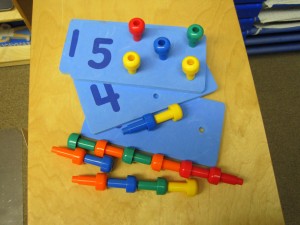 Several weeks ago I attended a seminar on creating effective experiences and environments… for preschoolers. I was the only guy in the room and the only person who wasn’t a preschool teacher. Frankly, I think it kind of threw off the presenter to have me there.
Several weeks ago I attended a seminar on creating effective experiences and environments… for preschoolers. I was the only guy in the room and the only person who wasn’t a preschool teacher. Frankly, I think it kind of threw off the presenter to have me there.
Throughout the presentation, she awkwardly added phrases like, “and dads,” and changed her lingo as she referred to body parts. It was one of the best bits of training I’ve been to in a while. Here are three things I learned from this preschool seminar that you can use to create effective experiences and environments in your youth ministry:
1. Use consistent cues to signal appropriate behavior.
In preschool, this is singing the Clean Up Song (sorry, it’s stuck in my head now too…) each time we ask kids to transition from crafts or center time to circle time. In the church we call it a call to worship.
Historically it was the ringing of the church bell or the playing of the organ which signaled to the congregation that it was time to gather. More recently, I remember an elder flashing the lights in the narthex to catch people’s attention.
During a weekend retreat, we always play the same song during our 3-minute countdown. By the second main session, students have figured out that this audible cue is a signal to turn their attention to worship. During that same time, we teach a simple, rhythmic dance, with hand motions and spinning around. We only have to demonstrate it for about 40 seconds on the first day, and students almost universally latch on to the routine.
This consistent cue allows us to avoid having to say something like, “Ok guys, let’s get started.” And it makes it easy for the band to focus on what they do best—leading worship—rather than behavior management.
2. Eliminate distractions during circle time.
Three- and four-year-olds have a hard enough time staying engaged without extraneous visual cues and distractions. In a preschool classroom, the recommendation is to remove toys and objects from the area where you will gather the children for teaching. In your world, that may mean giving students a safe place to leave their coats, phones, and backpacks.
Additionally, you should evaluate everything on stage and within the line of sight of your students with this question, “Is it going to cause them to engage more or less?” Common mistakes we have made are using certain motion backgrounds that have too much information, overdoing it with lighting cues or stage props, and using strange or outdated slide transition.
I recommend simple, monochromatic motion backgrounds or background images. These can be coordinated with the color choices of stage lighting and backdrops, and changed from time to time during your session, but not between each song. You will do best to avoid almost every slide transition built into PowerPoint or the presentation software you use; choose the simplest fade on a medium speed between songs and images, and a faster speed between verses of a song.
3. Create space for big and small movement.
Preschoolers get time each day for running around on the playground or in a gym, as well as for stringing beads. You will do well to allow the same sort of variety in the worship and activities you choose for your youth ministry.
Within a single session, we will provide opportunities for students to jump, dance, spin, shout and laugh, as well as to sit, bow, pray, listen and sing quietly.
This variety will help to engage different students, as well as help to engage different parts of their brains. A common progression for a main session at camp is to start big by capitalizing on their eagerness to get started, move toward intense but focused corporate worship which prepares them to engage with the teacher, and then build back up and dismiss with an epic song which can serve as an anthem for their day. (In a future blog, I’ll address how a speaker or preacher can vary his energy to create the same spectrum within a single message.)
Since I’m married to a child development professional, I’m learning to see these things that educators and childcare professionals know innately, as keys to leading a successful ministry to students.
What are some of the things you do to create effective environments and experiences in your church or ministry?